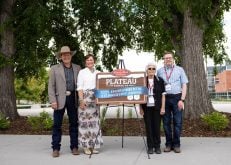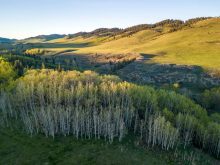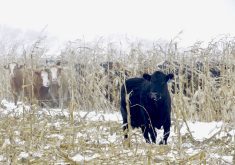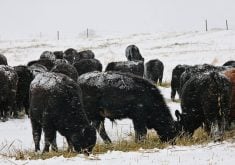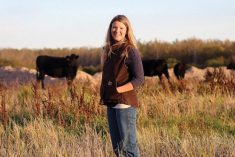Got cows? On your cropland?
Jay Fuhrer certainly hopes so. The soil health specialist believes cropland and large ruminants are a natural fit. He advocates turning animals out of the barn and onto the land whenever possible.
“Soils, plants, and animals evolved together,” he said at the recent Dairy Farmers of Manitoba conference. “And we must recognize the systems we use today are not the systems that built your soils.”
But natural soil-building systems can be mimicked by producers, benefiting the environment, farmers’ bottom lines and livestock, said Fuhrer, a conservationist with the U.S. Department of Agriculture.
Read Also

Mosquito-borne virus could be devastating to sheep breeding operations
Cache Valley virus, a mosquito-borne disease that infects small ruminants, could be a devastating hit to small operations.
Fall and winter grazing converts high-carbon annual crop residue into low-carbon organic material, while managing crop rotation residue and balancing the carbon-to-nitrogen ratio, he said. Short periods of spring or summer grazing, followed by long periods of recovery, expose plants to additional sunlight and CO2, allowing for more vigorous growth.
“This is when we start to mimic that natural cycle,” Fuhrer said.
The key component to making it all work is cover crops, he said.
“I used to think they were important, but now I know they are essential.”
He suggests using a full-season cover crop in the summer months, then allowing for a full plant recovery before animals begin a second grazing session in the fall. Planting a second cover crop after harvest is also advisable, although very few producers make use of the technique.
“Simplified rotations have resulted in fewer fall seeding windows for cover crops,” Fuhrer said, noting that winter is also a challenge for producers looking at cover crops, but not an insurmountable one.
One option is using a biennial cover crop or “planting green.”
“The way that would work is putting in cereal rye that fall — in a field that is going to go to soybean — then we plant directly into the standing rye or plant green,” he told producers. “So consequently, you’re looking at bringing in a fibrous plant and a fibrous plant is what built soil aggregates.”
Without aggregates, soil acts like a brick surface, unable to absorb water or move salts deeper into the earth, he said.
“If you have aggregates then you get water into the soil,” said Fuhrer. “That takes a fibrous plant.”
Cover crops also help reduce the amount of nutrients exported off the land and manage water quality.
“When we have water evaporating, instead of transpiring, we have a problem,” said the soil specialist. “Evaporation is going to leave the salt on the surface and you don’t want that.”
In-field grazing also minimizes the amount of time spent moving animal waste and feed, but bales can still be used to effectively recycle nutrients and carbon if they are fed in situ.
“It’s not evil to make it bale, it depends where you feed that bale,” he said. “If you feed that bale in a feedlot, most of that is going to be lost. Now you’ve got carbon that’s not coming back.”
Livestock are one of the five pillars of soil health, along with building soil armour (both residue and living plants), minimizing soil disturbance and continual live plant or root development, Fuhrer said. An integrated system of cover crops and grazing livestock will suppress weed growth as well.
“So this is how we turn things around,” he said. “You look at the root causes when you have problems.”
This article first appeared on the Manitoba Co-operator.




